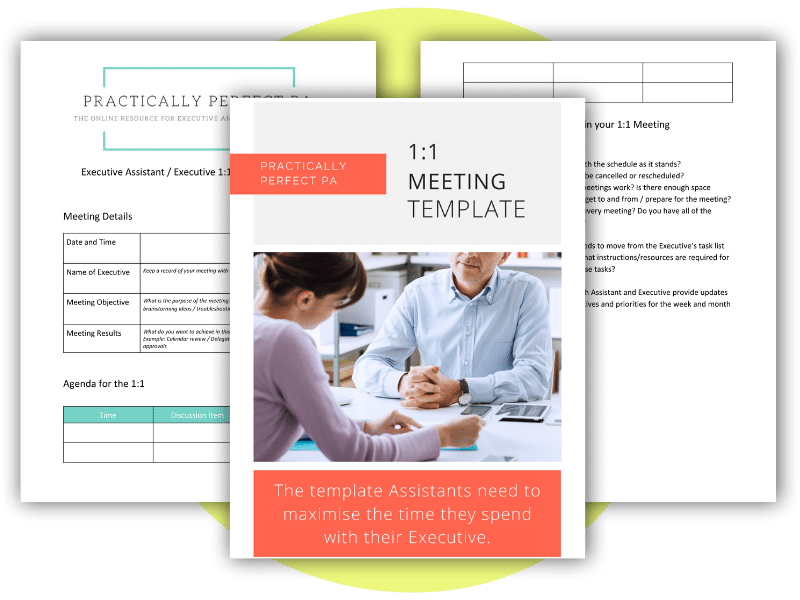Building a Collaborative Partnership with your Executive
In this article, we will dive into the secret sauce of how you and your Executive can become a highly effective team – building a collaborative partnership with your Executive. It goes without saying that our role is the backbone of our Executives’ success, and working together collaboratively is the key. But what does that actually mean for Assistants? You can enhance your collaboration skills and work effectively in partnership with your Executive in many ways. In this article, we will share practical tips to ensure you bring out the best in each other.
Understanding Effective Collaboration
We are going to look at several practical strategies you can implement to improve your collaboration, but before we do, let’s look at the key elements when building a collaborative partnership with your Executive.
Effective collaboration is more than just working together; it’s about creating a synergy where the strengths of the Executive and the Assistant complement each other. When you can collaborate effectively, you notice that you are both working more productively and can achieve more in your roles. Here are seven critical elements of effective collaboration:
- It is crucial to maintain open channels for communication, including two-way feedback. You and your Executive should feel comfortable providing and receiving feedback regularly to address issues promptly.
- Information should flow like a river between you and your Exec. Surprisingly, only 54% of people feel this happens in their workplace, so there’s plenty of room for improvement.
- You and your Executive should be on the same page, working towards common goals. This means you should be aware of their objectives and goals. This level of awareness will keep misunderstandings at bay and efficiency levels high.
- Attend as many strategic planning sessions as you can. Ensure you are invited to meetings where decisions affect your work and your Executive. Seeing the big picture helps you contribute effectively to the goals.
- Trust is the glue holding your partnership together. Your Executive should trust you with important tasks, and you should be made aware of high-level strategic decisions, again that might affect your role and the work you both do.
- Use Slack, Microsoft Teams, Asana, and Trello to streamline your work. Though the effectiveness of these tools can sometimes be a bit “meh,” they are essential nonetheless and must be utilised to make collaboration effortless.
- Organisations should strive to create a culture that supports open collaboration, with senior leadership modelling collaborative behaviours.
Why Collaboration is Key for Assistants
Effective collaboration isn’t just good for you and your Exec; it really is the heartbeat of a successful Organisation. Atlassian recently conducted some research into organisational collaboration and released some interesting stats:
- 83% of decision-makers say better communication is crucial, and 73% believe interdepartmental collaboration is more critical now than ever.
- Firms that nail open collaboration see benefits like improved team unity, better customer experiences, more revenue, and the ability to attract top talent.
But here’s the kicker—only 41% of organisations actually prioritise this. This gap is where we can swoop in and really shine. If you collaborate with your Executive, you can show the potential to the rest of the organisation, not just how valuable the assistant-executive partnership can be but also collaboration as a whole.
Improving your collaboration skills
Working collaboratively with your Executive is absolutely a two-way street, but you also have to look at your own skills and see where you can potentially improve so that your side of the partnership is firing on all cylinders. Here are just a few traits that help with collaboration.
- Proactiveness: Always be a step ahead. Anticipate needs and take initiative without waiting to be asked.
- Adaptability: Roll with the punches and keep a positive attitude. Flexibility is key for Assistants.
- Emotional Intelligence (EI): Understand and manage your emotions and those of others. Check-ins and sharing how you feel can foster a supportive environment.
- Regular Check-Ins and Updates: Communicate constantly with your Executive. Discuss projects, deadlines, and roadblocks to stay aligned.
- Set Clear Expectations: Define roles and responsibilities clearly to avoid misunderstandings.
- Encourage Open Dialogue: Be approachable and open to feedback. Your openness sets the tone even if your Executive isn’t always on board.
Enhancing Your Collaboration Skills
Now that we understand what traits we need when building a collaborative partnership with your Executive let’s look at some strategies and tactics you can employ to make your collaborative efforts really zing.
The Five Whys Method
The Five Whys Method is a simple yet effective problem-solving tool designed to drill down into the root cause of a problem by repeatedly asking “why.” Here’s how to use it:
- Identify the Problem: Start with a clear problem statement.
- Ask Why: Keep asking “Why?” until you drill down to the root cause, usually about five times.
- Agree on the Root Cause: Make sure everyone’s on the same page.
- Develop Solutions: Address the real issue, not just the symptoms.
Implementing the Five Whys with Your Executive:
Set aside time to discuss the issue or problem you are experiencing. Make sure you document your discussion and create a safe space for honest dialogue. Use tools like Trello or Google Docs to keep you on track regarding the decisions that you are making.
An example of the 5 Whys method in action:
So you’ve got a problem. You know, there is a problem that you need to work on with your Executive to solve. You first need to set aside time with your Executive to discuss an issue that needs attention. Come prepared with a problem statement that you both agree on. So, for example, why did we miss the project deadline?
Whether you’re working remotely or in person, create a shared space where you can document your discussion. Tools like Confluence, Trello, or Google Docs are great for this. Label the document with a problem statement and space for each why, and then begin the session by explaining that the goal is to understand the root cause not to place blame, that’s important because this fosters a safe environment for honest discussion. Then start with your initial problem statement and ask, why did this happen? And note down the answer. Then, take that answer and ask why again. Repeat this process five times. So, for instance, why did we miss the project deadline?
Because we underestimated the project scope. Why did we underestimate the project scope? Because we didn’t allocate enough time for the planning phase. Why didn’t we allocate enough time for the planning phase? Because we were trying to meet an aggressive start date. Why was the start date aggressive?
Because we wanted to impress the client. Why did we feel the need to impress the client? Because we were worried about losing the client. Okay, so you see what’s happened there. You’ve got to the problem’s root cause in a specific way. So discuss and agree on the root cause you’ve uncovered with those five whys.
In our example, the root cause might be the pressure to impress the client, leading to an unrealistic timeline. We could then work together to propose solutions. So, for the example above, solutions could include setting more realistic timelines, involving the client in the planning process, and regularly reviewing the project scope.
Personal Knowledge Management System (PKMS)
Our next suggestion is to use the PKMS method when building a collaborative partnership with your Executive.
A PKMS is a framework for collecting, organising, and retrieving knowledge and information. Benefits include enhanced efficiency, improved decision-making, increased productivity, and better collaboration. Here’s how to develop a PKMS:
- Identify Your Needs: Determine what info you need to manage.
- Choose the Right Tool: Pick a tool that suits your style—Evernote, Trello, Notion, OneNote, or Google Drive.
- Organise Information: Create a structured system with folders, tags, and categories.
- Regularly Update Your System: Keep it fresh by updating and archiving old info.
- Share with Your Exec: Keep your Executive informed about your PKMS and share relevant information.
So, how do you go about putting together a personal knowledge management system? First things first, identify your needs. Start by determining what type of information you need to manage. This could be meeting notes, project documents, important contacts, industry research, recent reports and projects, presentations, or whatever it happens to be.
You might understand what you need to document and what the information is. Then, pick the right tool. Select the tool that suits your needs and your work style. There are absolutely tons, and I’m sure you’re already using these tools, but Evernote is one that is great for note taking.
Trello is great for task management, and Notion is excellent for an all-in-one workspace. You know, you’ve got OneNote if you’re a Microsoft user, and you’ve got Google Drive. If you’re a Google user, there are a ton of apps and software out there. The key is to find the tool that works for you, that’s intuitive and effective, and that you will use and then organise that information. So, create a structured system for organising your information. This might involve setting up folders, tags, and categories. For example, you could have separate meeting notes, project plans, and industry news sections. If you work with more than one Executive, you could have a whole space dedicated to each of your executives.
You just have to organise that information and then regularly update your system. So, make it a habit to regularly update your PKMS with new information and remove outdated content. Archive that because you want things that are at your fingertips. You don’t want to go through old documents.
Consistency is critical to maintaining your effective system. So make sure that you have time in your day to do the good old-fashioned filing. Then, share that with your Executive. Keep your Executive informed about your PKMS and share the relevant information with them. This is your hub.
This is your second brain. This not only helps them stay informed but also, again, showcases your proactive approach and how good you are at collaborating. I want to return to regularly updating your system because many of us struggle with this. We all have great intentions, but how do you maintain your knowledge hub?
So, set aside time. Dedicate a specific time each week to updating and organising your filing system and your PKMS. Consistency ensures that your system remains valuable and up-to-date. Stay flexible. Your PKMS should evolve with your needs. So, if something else comes up, some other project, don’t be afraid to tweak your system and the tools that you’re using as you discover what works best for you.
Consider enrolling in our Managing Up and Working in Sync Online Course to enhance your collaboration skills. This course is designed to provide you with deeper insights and advanced strategies for working more effectively with your Executive. You’ll learn to manage up, enhance your collaborative efforts, and create a more productive working environment.




